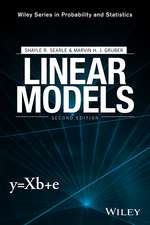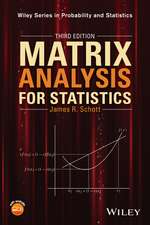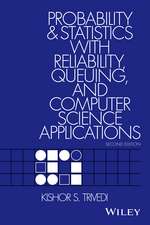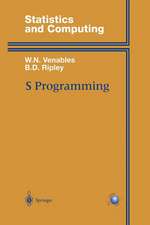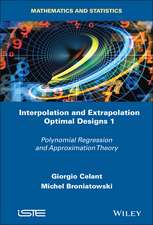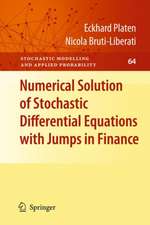Data Analysis Using the Method of Least Squares: Extracting the Most Information from Experiments
Autor John Wolbergen Limba Engleză Paperback – 16 dec 2005
Preț: 387.58 lei
Nou
Puncte Express: 581
Preț estimativ în valută:
74.16€ • 76.51$ • 61.89£
74.16€ • 76.51$ • 61.89£
Carte tipărită la comandă
Livrare economică 26 martie-09 aprilie
Preluare comenzi: 021 569.72.76
Specificații
ISBN-13: 9783540256748
ISBN-10: 3540256741
Pagini: 263
Ilustrații: XIII, 250 p.
Dimensiuni: 152 x 229 x 20 mm
Greutate: 0.4 kg
Ediția:2006
Editura: Springer Berlin, Heidelberg
Colecția Springer
Locul publicării:Berlin, Heidelberg, Germany
ISBN-10: 3540256741
Pagini: 263
Ilustrații: XIII, 250 p.
Dimensiuni: 152 x 229 x 20 mm
Greutate: 0.4 kg
Ediția:2006
Editura: Springer Berlin, Heidelberg
Colecția Springer
Locul publicării:Berlin, Heidelberg, Germany
Public țintă
Professional/practitionerCuprins
The Method of Least Squares.- Model Evaluation.- Candidate Predictors.- Designing Quantitative Experiments.- Software.- Kernel Regression.
Textul de pe ultima copertă
The preferred method of data analysis of quantitative experiments is the method of least squares. Often, however, the full power of the method is overlooked and very few books deal with this subject at the level that it deserves. The purpose of Data Analysis Using the Methods of Least Squares is to fill this gap and include the type of information required to help scientists and engineers apply the method to problems in their special fields of interest. In addition, graduate students in science and engineering doing work of experimental nature can benefit from this book. Particularly, both linear and non-linear least squares, the use of experimental error estimates for data weighting, procedures to include prior estimates, methodology for selecting and testing models, prediction analysis, and some non-parametric methods are discussed.
Caracteristici
Develops the full power of the least-squares method Enables engineers and scientists to apply the method to their specific problem Deals with linear as well as with non-linear least-squares, parametric as well as non-parametric methods



